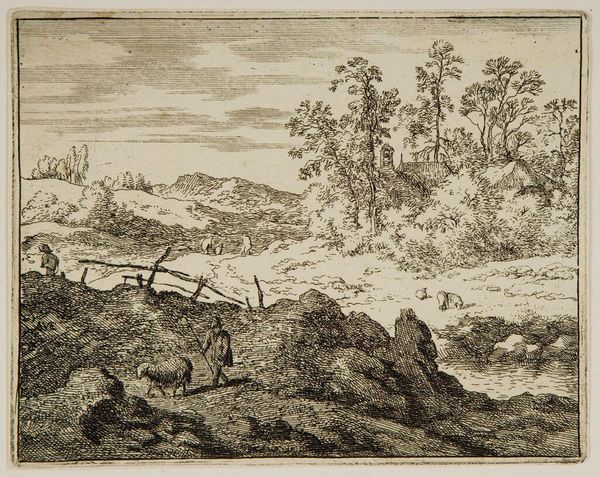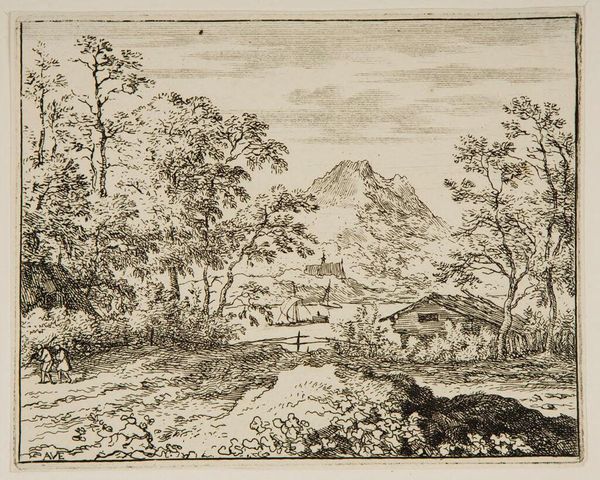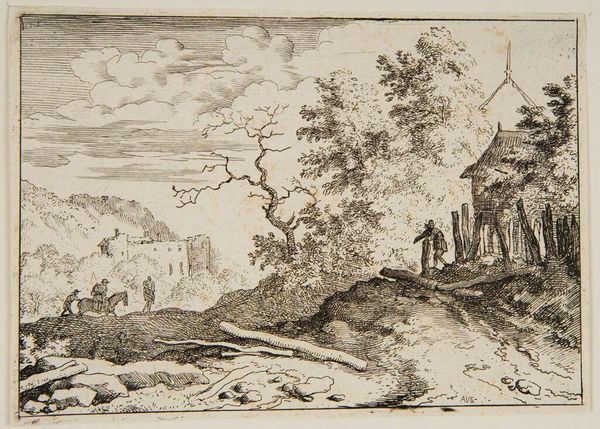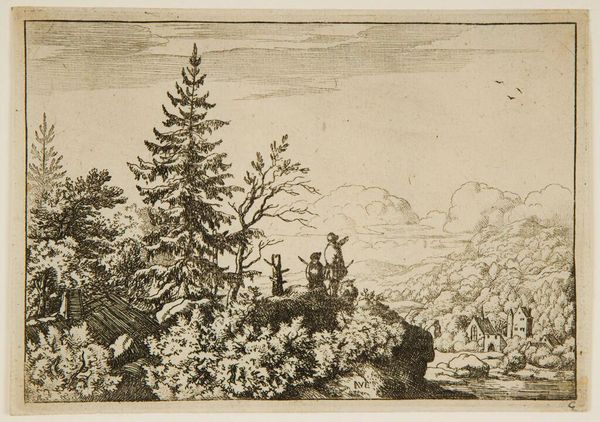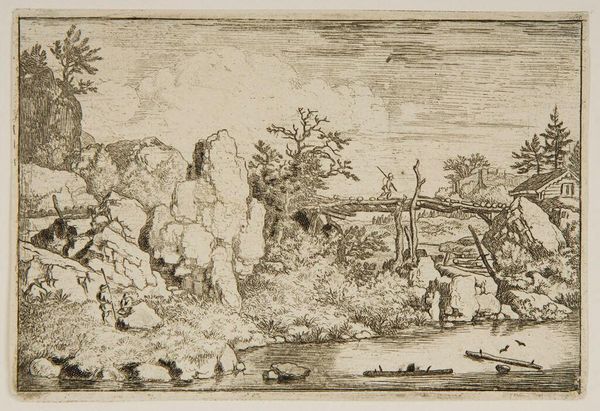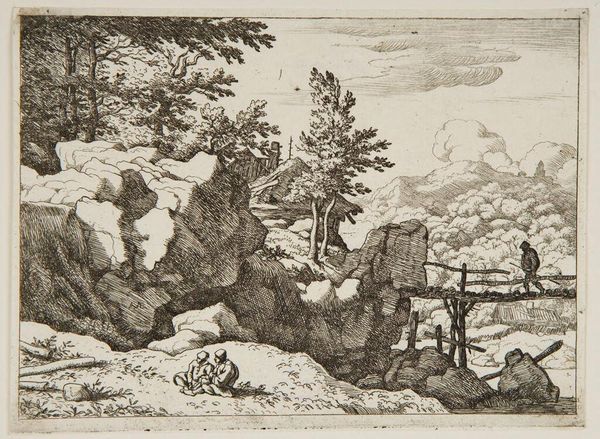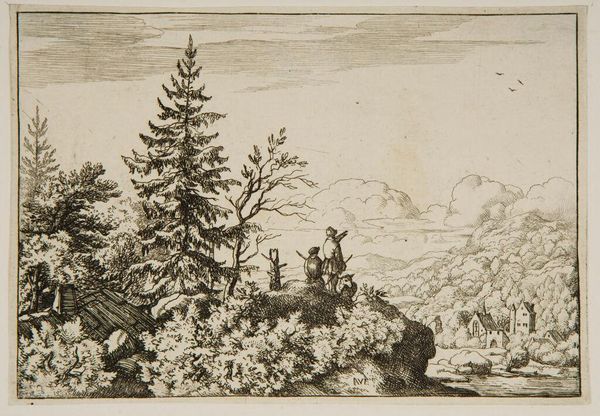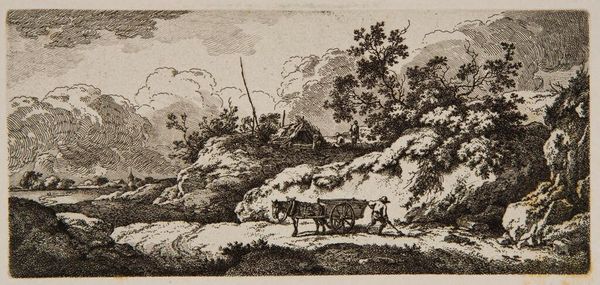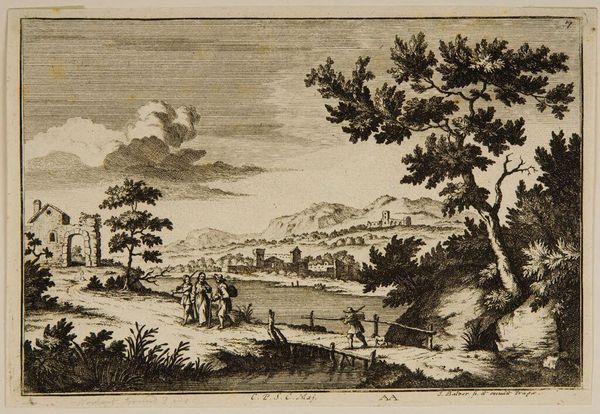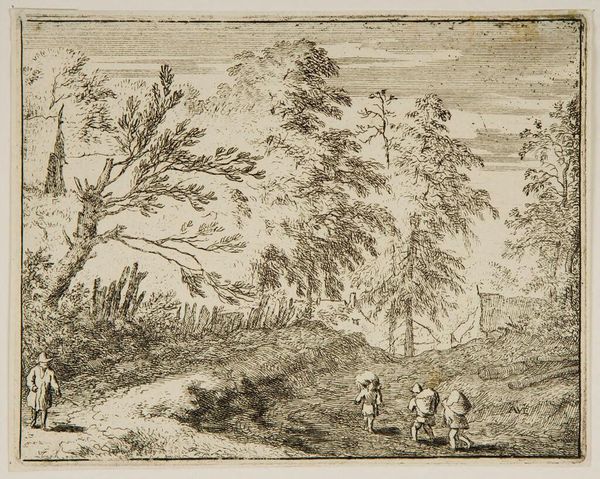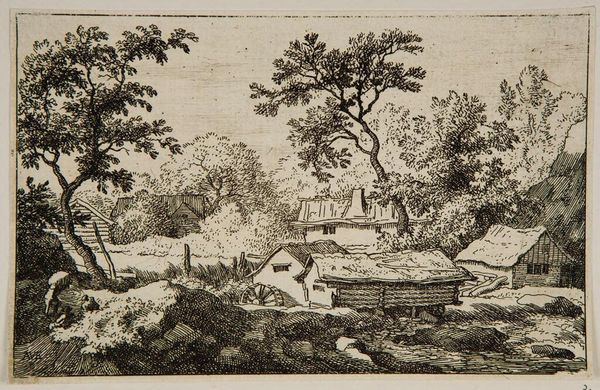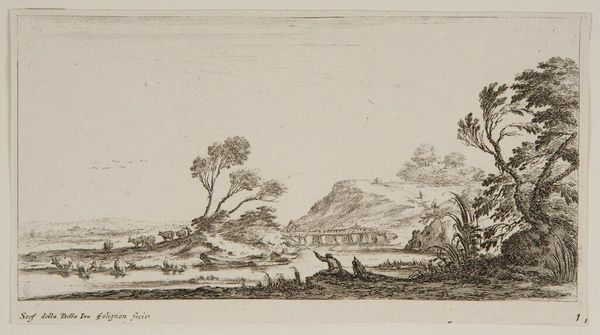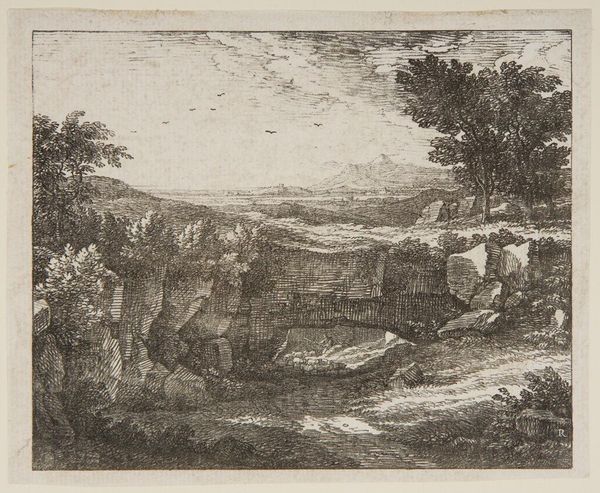
Copyright: CC0 1.0
Editor: Here we have Allart van Everdingen's "Shepherd," an undated etching from the Harvard Art Museums. It feels so detailed and intimate, despite depicting a sweeping landscape. How do you interpret this work, considering its historical context? Curator: Van Everdingen's pastoral scenes, popular in the Dutch Golden Age, often idealized rural life while subtly reflecting the economic realities of the time. Notice how the shepherd, though central, is a small figure in a vast landscape. Does that suggest anything about the social status of the working class? Editor: It does make him seem rather insignificant, even vulnerable. I hadn't thought about it that way. Curator: These images served a purpose, reinforcing certain social hierarchies while offering a comforting, though perhaps unrealistic, vision of country life to urban audiences. Editor: That's fascinating! I'll definitely look at similar works with a more critical eye now. Curator: Remember, art doesn't just reflect society; it actively shapes it.
Comments
No comments
Be the first to comment and join the conversation on the ultimate creative platform.
